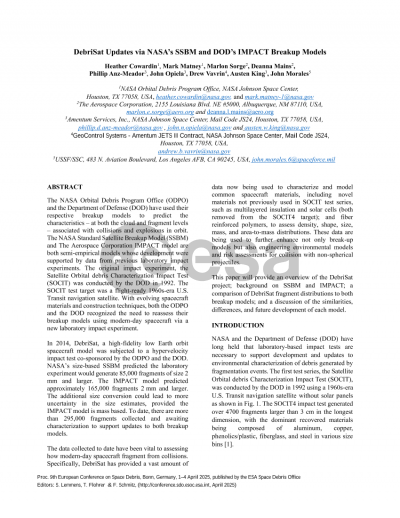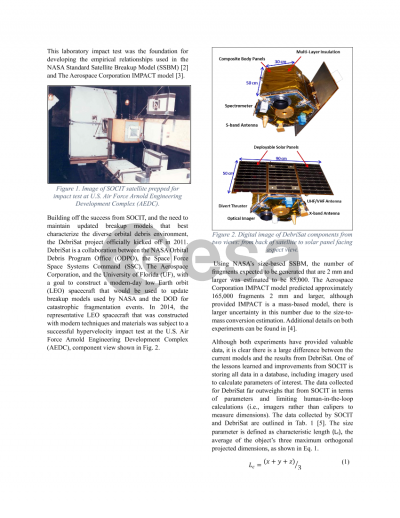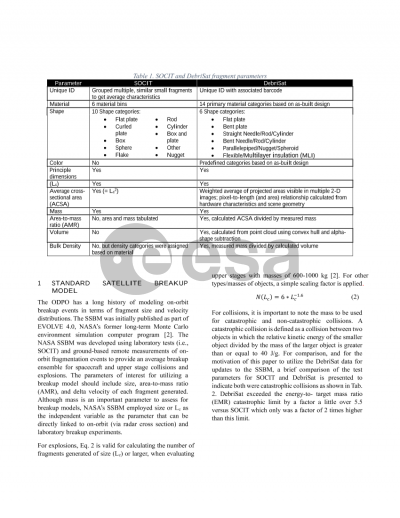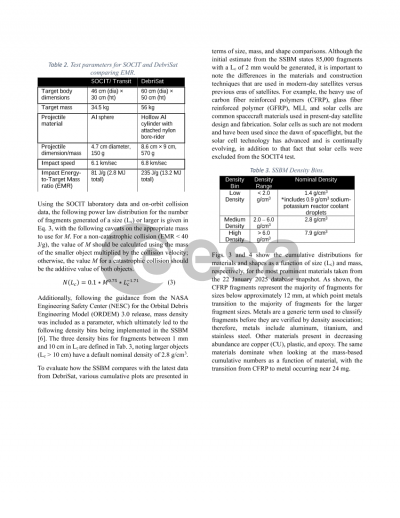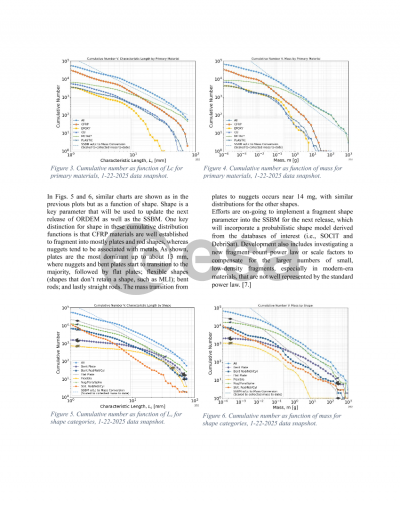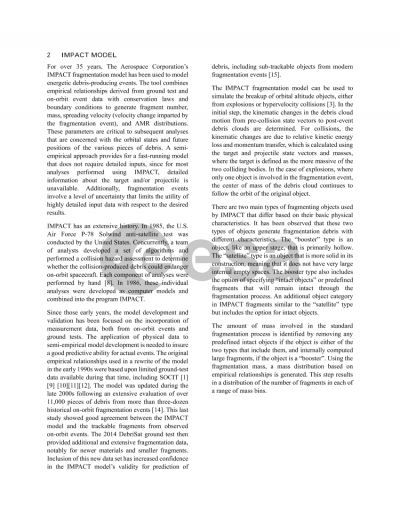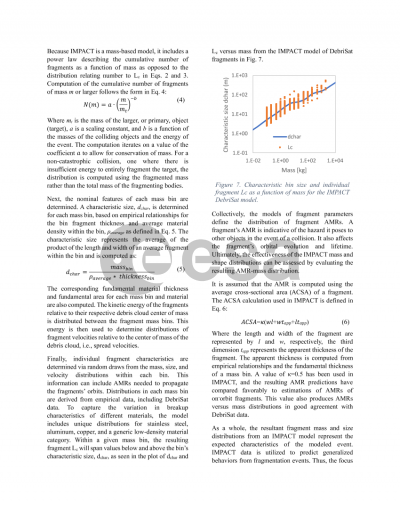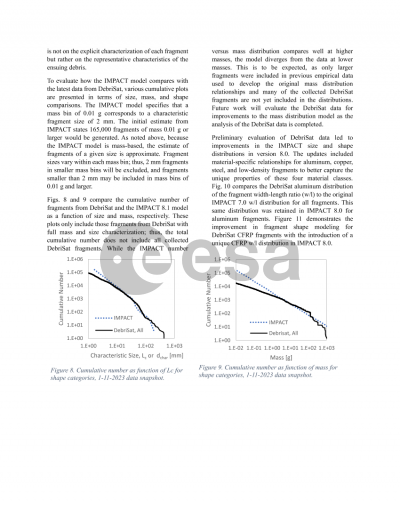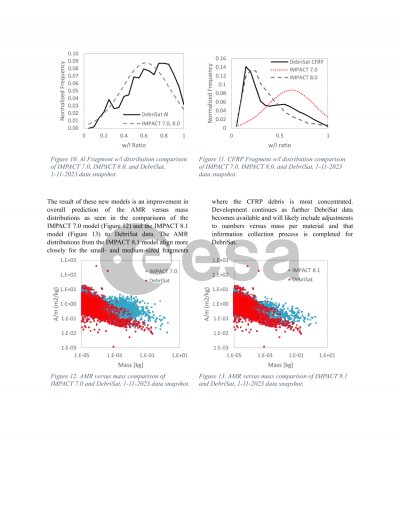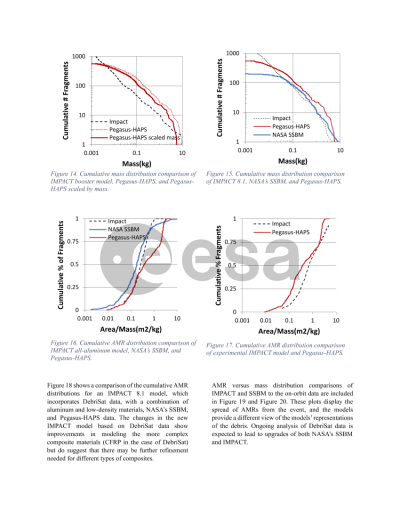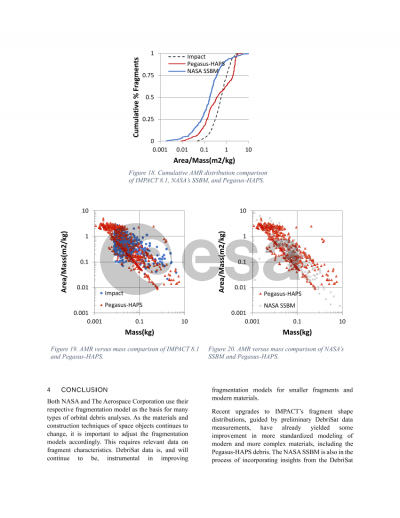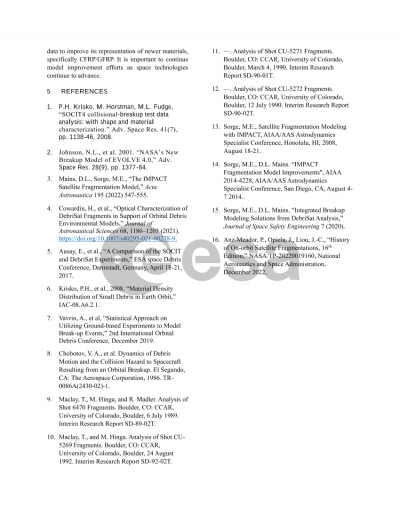Document details

Abstract
The NASA Orbital Debris Program Office (ODPO) and the Department of Defense (DOD) have used their respective breakup models to predict the characteristics – at both the cloud and fragment levels – associated with collisions and explosions in orbit. NASA’s Standard Satellite Breakup Model (SSBM) and The Aerospace Corporation’s IMPACT model are both semi-empirical models whose development was supported by data from previous laboratory impact experiments. The original impact experiment, the Satellite Orbital debris Characterization Impact Test (SOCIT) was conducted by the DOD in 1992. The SOCIT test target was a flight-ready 1960s era U.S. Transit navigation satellite. With evolving spacecraft materials and construction techniques, both the ODPO and the DOD recognized the need to reassess their breakup models using modern-day spacecraft via a new laboratory impact experiment.
In 2014, DebriSat, a high-fidelity low Earth orbit spacecraft model was subjected to a hypervelocity impact test co-sponsored by the ODPO and the DOD. NASA’s size-based SSBM predicted the laboratory experiment would generate 85,000 fragments of size 2 mm and larger. The IMPACT model predicted approximately 165,000 fragments 2 mm and larger. The additional size conversion could lead to more uncertainty in the size estimates, provided the IMPACT model is mass based. To date, there are more than 295,000 fragments collected and awaiting characterization to support updates to both breakup models.
The data collected to date have been vital to assessing how modern-day spacecraft fragment from collisions. Specifically, DebriSat has provided a vast amount of data now being used to characterize and model common spacecraft materials, including novel materials not previously used in SOCIT, such as multilayered insulation and solar cells (both removed from the SOCIT target); and fiber reinforced polymers, to assess density, shape, size, mass, and area-to-mass distributions. These data are being used to further enhance not only break-up models, but also engineering environmental models and risk assessments for collision with non-spherical projectiles.
This paper will provide an overview of the DebriSat project; background on SSBM and IMPACT; a comparison of DebriSat fragment distributions to both breakup models; and a discussion of the similarities, differences, and future development of each model.
Preview
